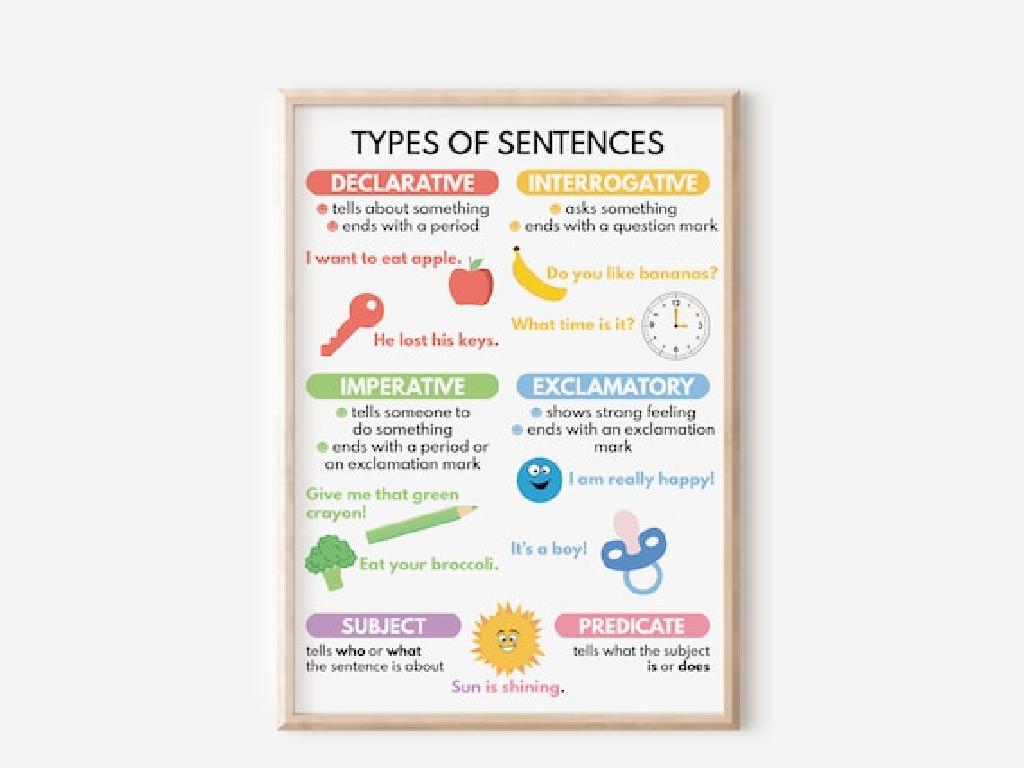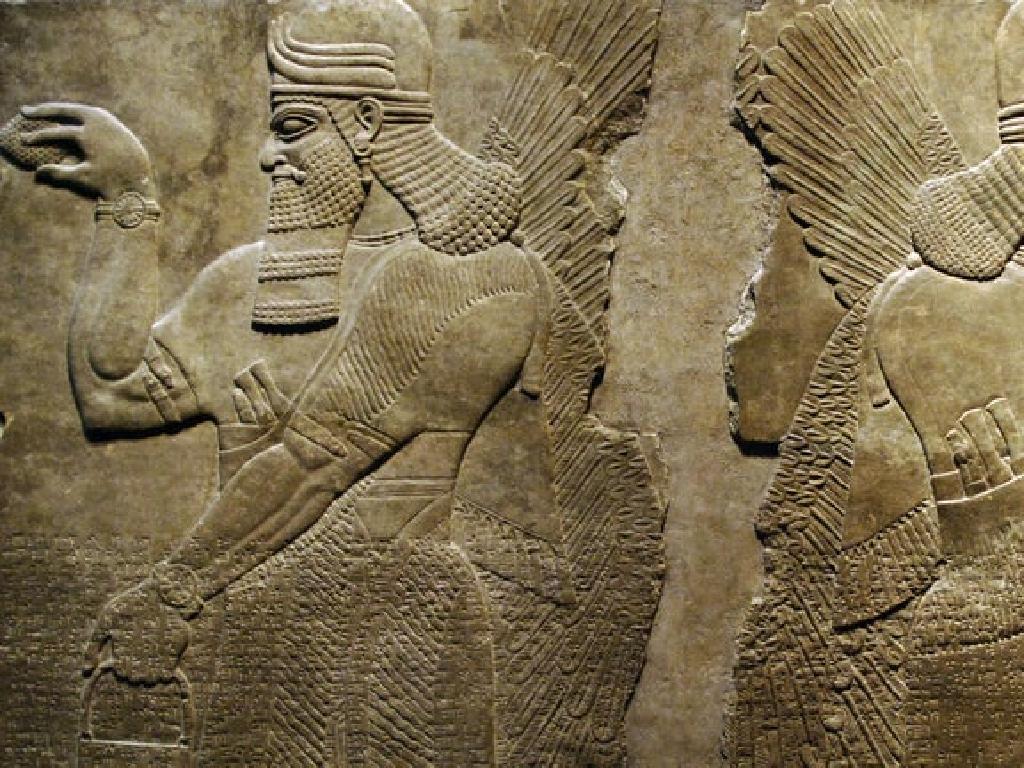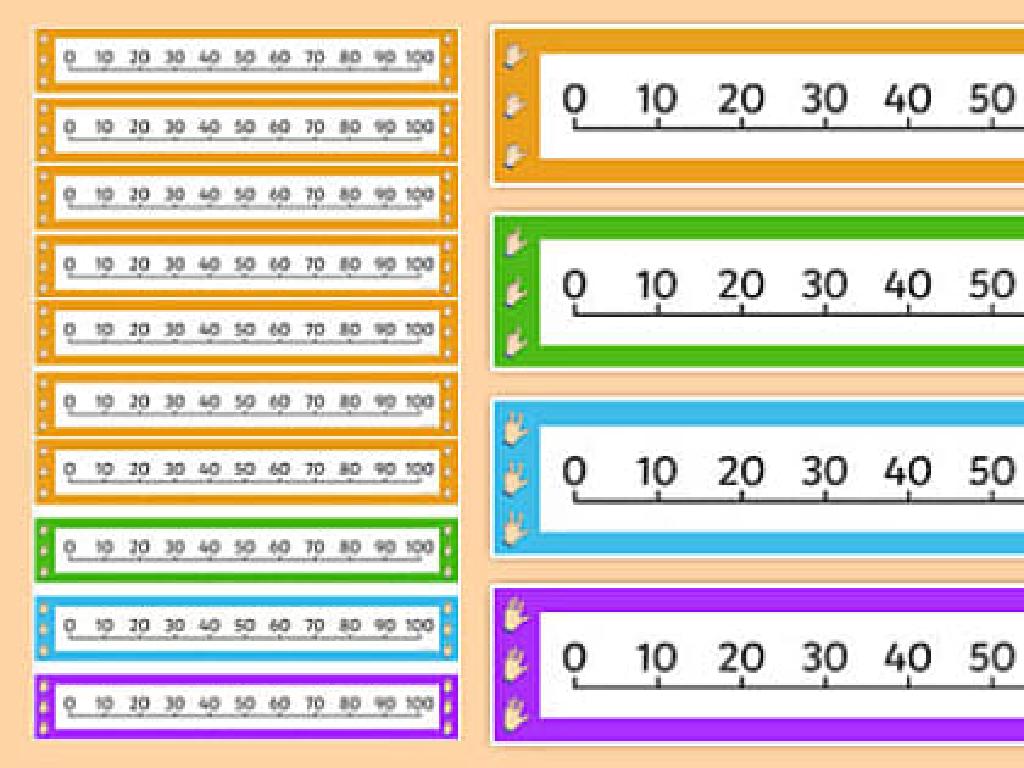Identify And Correct Plagiarism
Subject: Language arts
Grade: Fifth grade
Topic: Research Skills
Please LOG IN to download the presentation. Access is available to registered users only.
View More Content
Understanding Plagiarism in Research
– Importance of original work
– Using your own ideas shows creativity and honesty.
– Defining plagiarism
– Copying someone’s work without credit is plagiarism.
– Recognizing plagiarism
– Look for copied phrases or ideas without citations.
– Correcting plagiarism
– Always give credit and use quotes or paraphrase.
|
This slide introduces the concept of plagiarism and its significance in research skills. Emphasize to students that original work is valued for its creativity and integrity. Explain that plagiarism is the act of using someone else’s work without giving them credit, which is both unethical and illegal. Teach students how to spot potential plagiarism by identifying phrases or ideas that seem copied and checking for proper citations. Finally, instruct them on how to correct plagiarism by citing sources correctly, using quotation marks for direct quotes, and paraphrasing information in their own words. Encourage a discussion on why it’s important to be honest in their work and how plagiarism can affect their academic journey.
Understanding Plagiarism
– Define plagiarism
– Using someone else’s work as your own without credit
– Explore types of plagiarism
– From copying work to paraphrasing without credit
– Discuss why it’s a serious issue
– It’s dishonest, unfair, and can have consequences
|
This slide introduces the concept of plagiarism to the students. Begin by defining plagiarism as the act of using someone else’s words, ideas, or work without giving them proper credit. Explain that it’s like taking something that isn’t yours. Discuss the different types of plagiarism, such as copying text directly, paraphrasing someone’s ideas without acknowledging them, or even using media without permission. Emphasize why plagiarism is a serious issue: it’s a form of cheating and intellectual theft, it’s unfair to the original creators, and it can lead to serious consequences in school and later in life. Encourage students to always do their own work and to cite sources properly when they use someone else’s ideas.
Understanding Plagiarism
– Copying work without credit
– Taking text directly from a source without saying where it’s from is plagiarism.
– Paraphrasing without citing
– Even if you rewrite in your own words, you must give credit to the original author.
– Claiming others’ ideas
– Presenting someone else’s thoughts or ideas as your own is not honest.
– Importance of original work
|
This slide aims to educate students on the concept of plagiarism and its various forms. Direct copying of text without attribution is a clear example of plagiarism. Paraphrasing, or rewriting someone else’s work in one’s own words without proper acknowledgment, is also plagiarism. Using someone else’s ideas without giving them credit is dishonest and considered intellectual theft. Emphasize the importance of creating original work and respecting others’ intellectual property. Provide examples and encourage students to always cite their sources when using someone else’s work. Discuss the ethical implications of plagiarism and its impact on academic integrity.
Why Should We Avoid Plagiarism?
– Plagiarism is unethical
– Copying someone’s work without credit is wrong
– It disrespects creators
– Taking credit for others’ work is not fair to the creator
– Serious school consequences
– You can get a failing grade or be suspended
– Long-term negative impact
– It can damage your reputation for a long time
|
This slide aims to educate students on the importance of academic honesty and the reasons why plagiarism must be avoided. Plagiarism is not just copying words; it’s stealing someone’s intellectual property. It’s crucial to instill respect for original work and to understand the value of giving proper credit. Discuss the potential consequences of plagiarism in school, such as failing assignments or disciplinary actions, and emphasize that these consequences can extend beyond school, potentially affecting future academic and professional opportunities. Use examples to illustrate the impact of plagiarism and encourage students to always do their own work or cite sources correctly.
How to Identify Plagiarism
– Spot unusual phrasing
– Phrases not common for fifth graders or advanced words
– Notice style changes in text
– Sudden shifts in the way the writing sounds
– Use plagiarism checkers
– Online tools that compare work with other sources
– Understand consequences
|
This slide aims to teach students how to recognize plagiarism, which is using someone else’s work without giving them credit. Start by explaining that plagiarism is not acceptable and why it’s important to use their own words or to quote and credit the original author. Show examples of unusual phrasing that might indicate the words were copied from a source not written by a fifth grader. Discuss how a change in writing style can be a clue that parts of the work were copied. Introduce students to plagiarism detection tools available online and how they can help in checking work. Finally, talk about the consequences of plagiarism, emphasizing the importance of honesty and integrity in their work.
Correcting Plagiarism: Honesty in Writing
– Learn to paraphrase effectively
– Use your own words to express someone else’s ideas.
– Always cite your sources
– Give credit to the original author for their work.
– Include a bibliography page
– List all the sources you used at the end of your work.
– Understand consequences of plagiarism
– Plagiarism is using others’ work without credit; it’s unfair and can lead to serious trouble.
|
This slide aims to teach students the importance of academic honesty and how to avoid plagiarism. Paraphrasing is a skill where students learn to rewrite text in their own words while maintaining the original meaning. Emphasize the necessity of citing sources, which acknowledges the original creators and allows others to find the source material. A bibliography or works cited page is essential in listing all the references used in a project. Discuss the ethical and potentially legal implications of plagiarism to ensure students understand the gravity of the issue. Activities can include practicing paraphrasing paragraphs from books, creating citation cards for sources, and assembling a bibliography for a mini-research project.
Practice Activity: Spot and Fix Plagiarism
– Work in groups to find plagiarism
– Rewrite plagiarized text originally
– Use your own words, add personal insight
– Share your revisions with the class
– Understand the value of original work
– Discuss why it’s important to create original work
|
This activity is designed to be interactive and collaborative, helping students understand plagiarism and the importance of originality. Divide the class into small groups and provide them with examples of plagiarized text. Their task is to identify the plagiarism and then rewrite the text in their own words, ensuring it conveys the same message but is original. Afterward, each group will present their revised text to the class. This exercise will not only help them recognize plagiarism but also practice paraphrasing skills. As a teacher, facilitate discussions on why it’s essential to be original and the consequences of plagiarism. Provide guidance on how to properly cite sources and encourage students to express their unique perspectives in their work.
Wrapping Up: Plagiarism and Your Homework
– Review plagiarism concepts
– Understand consequences of copying
– Homework: Summarize an article
– Find an interesting article and write a brief summary in your own words.
– Practice original writing
– Remember to not copy; use your creativity to rephrase.
|
As we conclude today’s lesson on plagiarism, let’s recap the key points we’ve learned. Plagiarism is using someone else’s work without giving them credit, and it’s important to avoid it because it’s not fair to the original creator and it doesn’t show your own understanding. For homework, students should find an article on a topic they’re interested in and write a short summary. This exercise will help them practice putting information into their own words and reinforce the importance of originality in writing. Remind students to cite the source of their article. In the next class, we can discuss the summaries and highlight the good practices of paraphrasing and citing sources.






